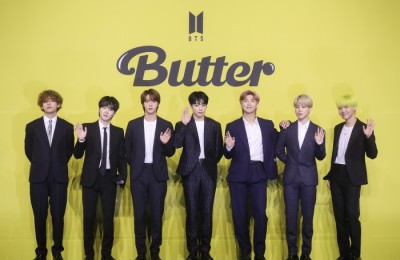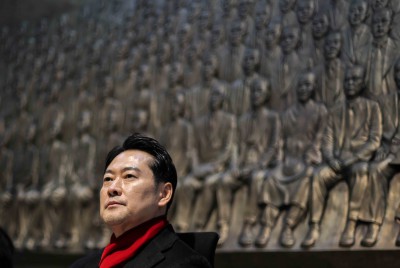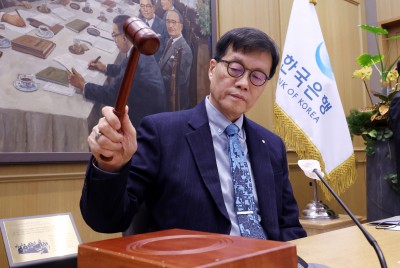William Poole*
President, Federal Reserve Bank of St. Louis
Global Interdependence Center (GIC) Abroad in Chile Conference
American Chamber of Commerce in Chile Breakfast
Santiago, Chile
March 2, 2007
*I appreciate comments provided by my colleagues at the Federal Reserve Bank of St. Louis. Edward Nelson, assistant vice president, provided special assistance. I take full responsibility for errors. The views expressed are mine and do not necessarily reflect official positions of the Federal Reserve System.
Energy Prices and the U.S. Business Cycle
 A staple of the macroeconomics literature is that energy price shocks have been an important contributor to U.S. recessions. The situation is clearly more complicated than the common macro textbook exercise of using standard diagrams to work out the effects of an energy shock. Recent experience with a near tripling of oil prices from mid 2003 to mid 2006 without a recession suggests the need to review the conventional wisdom. One of my messages will be that the conventional wisdom fails to consider the fact that previous oil price shocks occurred when the U.S. economy was already suffering from substantial inflation pressures, whereas the recent run-up of oil prices has occurred in an economy with substantial overall price stability and entrenched, low inflation expectations.
A staple of the macroeconomics literature is that energy price shocks have been an important contributor to U.S. recessions. The situation is clearly more complicated than the common macro textbook exercise of using standard diagrams to work out the effects of an energy shock. Recent experience with a near tripling of oil prices from mid 2003 to mid 2006 without a recession suggests the need to review the conventional wisdom. One of my messages will be that the conventional wisdom fails to consider the fact that previous oil price shocks occurred when the U.S. economy was already suffering from substantial inflation pressures, whereas the recent run-up of oil prices has occurred in an economy with substantial overall price stability and entrenched, low inflation expectations.Before I dig into the issue of the extent of causality between oil price shocks and recessions, I want to emphasize that the views I express here are mine and do not necessarily reflect official positions of the Federal Reserve System. I thank my colleagues at the Federal Reserve Bank of St. Louis for their comments; Ed Nelson, asistant vice president, provided special assistance. However, I retain full responsibility for errors.
The Debate
The historical record since 1970 provides some perspective on the relationship between oil prices and the business cycle. The figure (at end of text) plots the U.S. benchmark oil price (the West Texas intermediate spot price), both in nominal terms (i.e., current U.S. dollars) and real terms (i.e., deflated by the CPI so as to be in constant 1982-84 dollars) since 1970. Shaded regions denote U.S. recessions, as designated by the National Bureau of Economic Research. These include the recession of 1973-75, associated with the oil price shock of 1973-74, the recessions of 1980 and 1981-82, preceded by the second oil shock in 1979, and the recession of 1990-91, also associated with a large, but more transitory, oil price increase of about 75 percent in 1990-91. There are also more drawn-out but steep oil increases in 1999-2000 and 2003-2006. The presence of the recession bars in the graph brings out what Hamilton and Herrera (2004, p. 265) observe is “a correlation between increases in oil prices and subsequent economic downturns.” In particular, recessions began in the United States within a year of the 1973, 1979 and 1990 oil price increases.
There has been much debate on how much of this link between recessions and prior oil price increases should be attributed to the powerful effect of oil shocks on the economy, and how much reflects a third factor—more restrictive monetary policy imposed at roughly the same time as the oil shocks. But I would draw attention to another aspect of the relationship between the business cycle and oil prices highlighted by the figure. The United States has never had an energy price spike occur in the middle of a recession, or immediately following a recession when unemployment is still relatively high. This fact suggests two properties of large oil price increases that are useful to keep in mind. First, very sharp increases in oil prices that we have observed historically, while undoubtedly reflecting exogenous supply disruptions to some degree, also reflect the strength of the economy at the time. Secondly, the casual association often made, based on the 1970s experience, between oil price increases and high inflation, is largely misguided because the large oil price increases of the 1970s occurred against the background of cyclical expansions that had gone too far.
The 1973 and 1979 episodes did not feature inflationary spirals triggered by the oil shocks. Instead, they are characterized by preexisting, general inflationary pressures that an alternative monetary policy could have avoided. The first oil shock in 1973 occurred against a background of clear economic overheating in the United States. U.S. monetary policy was very expansionary in 1971 and 1972, leading to excessive growth of aggregate demand that, even in the presence of price controls, spilled over into rising inflation in 1973. By October 1973—that is, the month of the first oil shock, but largely before its impact could be felt in the CPI—inflation had reached 8.1 percent on a 12-month basis, a sharp rise from the 3.2 percent rate over the 12 months ending in October 1972. Annual CPI inflation subsequently rose to 11.8 percent in October 1974 and peaked at 12.2 percent in November 1974.
Similarly, in the wake of several years of expanding demand, inflation rose throughout most of 1977 and 1978, well before the second oil shock, and the 12-month rate stood at 9.3 percent in January 1979, 2.5 percentage points above its value of January 1978. Inflation subsequently peaked at 14.6 percent in March 1980. Even the 1990 oil price spike occurred late in a long economic expansion, with annual inflation having stood above 4 percent since mid-1988. In July 1990, the 12-month CPI inflation rate was 4.8 percent, too high to correspond to price stability and not far below the July 1989 value of 5.1 percent. Following the oil shock that began in August 1990, inflation peaked at 6.4 percent in October 1990.
The strength of the economy at the time of the three oil shocks is also reflected in the unemployment rate. In October 1973, the seasonally adjusted U.S. unemployment rate stood at 4.6 percent, its lowest rate since early 1970; in January 1979 it was 5.9 percent, close to its trough for the late 1970s expansion; and in July 1990, unemployment was 5.5 percent, above its March 1989 low of 5.0 percent, but still lower than its value in any month in the years 1975-1987.
This emphasis on the link between the state of the business cycle and the strength of oil prices may seem surprising. Many of the well-known spikes in the oil price are associated with exogenous events on the supply side: for example, OPEC’s quadrupling of the oil price in late 1973 in the wake of the Middle East war; OPEC’s doubling of the oil price in 1979 following the revolution in Iran; and Iraq’s invasion of Kuwait in 1990. These events were certainly major supply-side disruptions. But even a cartel like OPEC that administers the price of its product cannot ignore market conditions. In particular, a reason why OPEC was able to sustain the very large 1973 oil price increase for so long was because world demand for oil was underpinned by rapid expansion of aggregate demand in key markets in Europe, Japan and the United States. Indeed, some analysts of the 1973 oil shock have cast doubt on whether the oil price increase of 1973 can be considered an exogenous event at all; Barsky and Kilian (2001) argue that it was a delayed response to long-term demand developments in the oil market, combined with a response to contemporaneous buoyant world demand conditions.(1) We do not have to go this far, however, to recognize that there was a significant endogenous component to the oil price increases in 1973 and 1979 due to demand factors, reflecting an overheating of the U.S. economy which coincided with boom conditions in other advanced economies.
Oil Prices and Inflation
Members of the FOMC, as well as monetary policy makers in Europe and the United Kingdom, have spoken about oil prices and inflation on many occasions in recent years. Despite differences in emphasis, a clear proposition runs through these discussions: Irrespective of the behavior of oil prices, we can be confident that monetary policy oriented to price stability will deliver control over inflation over the medium term. It is worth spelling out this proposition in some detail.
The reason why price stability is not contingent on oil price behavior is that inflation is a sustained rise in the general level of prices. The price of oil enters heavily into a particular category of consumer prices—gasoline prices—and indirectly into the prices of many other products. It is possible for the price of energy-intensive goods to change relative to a general index of prices; in fact, such relative-price movements are part of the everyday workings of a market economy. And, over periods of, say, a year or more it is possible for monetary policy to secure low inflation—which means low growth rates in indexes of overall prices—even when energy price inflation is high. Over time, the general level of prices responds to the supply-demand imbalance in the economy: that is, to longer-term movement in total spending in the economy relative to long-run supply potential. Monetary policy actions affect the total volume of spending, and so can influence the balance between aggregate demand and supply. By keeping aggregate demand in balance with aggregate supply, monetary policy can create conditions for general price stability, even if certain components in the price index are persistently increasing.
Two aspects of this picture are worth emphasizing. First, the overall price level is susceptible to influence by monetary policy even if the price of oil, or other commodities, is being driven by exogenous supply events. That is why Milton Friedman could advance his proposition that “inflation is always and everywhere a monetary phenomenon” even though he acknowledged that the 1973 OPEC shock had produced a “drastic alteration in the conditions of supply of crude oil.”(2) The general trend of prices is distinct from the behavior of a single price in the index or subset of the index. Inflation is always an endogenous variable in the medium term, whatever exogenous shocks are affecting its components in the short term.
Secondly, monetary policymakers often pay attention to “core” measures of prices that exclude energy and food prices. This focus does not, however, mean that policymakers’ concept of price stability refers only to a basket of goods that excludes energy-intensive items. The overall cost of living is what matters for welfare, so stability over time in indexes that include energy is desirable. But because the price of gasoline is volatile, it is often desirable to “see through” very short-term movements in consumer prices, and work out what is happening to the underlying trend of prices. Looking at core measures of inflation can be useful for this purpose. Indeed core and aggregate inflation clearly move together over longer periods. That said, during periods of sustained increases in relative energy prices, general price stability requires that price indexes that exclude energy will need to grow more slowly than the aggregate price index; over this period, achievement of inflation at a desirable level means that core inflation, on average, proceeds below the overall level of inflation.
Thirdly, an oil price increase may reduce aggregate supply and policymakers also need to take this fact into account in keeping demand and supply in balance. This issue is most prominent when the oil price change is permanent and when the economy’s technology is very energy-intensive on average. The 1973 oil shock, for example, was long-lasting and took place at a time when U.S. production was very energy-inefficient. Potential output thus fell substantially. The economy was already overheated by 1973; so, some reining in of spending by monetary policy was justified even before the oil shock; but once the oil shock took place, monetary policy needed to tighten, just to keep supply and demand from going further into imbalance. That is, it was necessary to let actual output fall with the decline in potential output. From this perspective, Hamilton and Herrera (2004) are not necessarily posing the right question when they ask how much of a monetary policy loosening would have been required to avoid a recession after the 1973 oil shock. The supply shock alone justified a monetary policy tightening on stabilization grounds.
In recent years, on the other hand, the circumstances of the 1973 oil shock have not been repeated. The economy has not been overheated; the economy is more energy-efficient so the impact on supply of oil shocks has been moderated; and the more severe spikes in the oil price such as in summer 2006 have been recognized as transitory in nature. In these circumstances, monetary policy is in a much better position to support aggregate demand in the face of oil shocks without endangering medium-term price stability. This state of affairs has been emphasized by the Federal Reserve Chairman in his discussion of the effect of oil shocks (Bernanke, 2006).
In summary, maintenance of low inflation over a period of several years or more is achievable whatever happens to oil prices. The same was true in the 1970s, and the fact that inflation was high on average reflected over-expansionary monetary policy, not the oil shocks.
Recent Oil Price Increases
The oil price increase in 2003-2006 is in line with the earlier pattern that surges in oil prices occur during economic expansions. Indeed, recent increases are more clearly a demand phenomenon than the previous increases. Energy prices in recent years have been driven by demand rather than supply. The source of this demand is unusual compared to the past, with a smaller contribution of U.S. demand and a much larger contribution of China. China’s net imports of oil were projected to be 2.3 percent of its GDP in 2006 compared to 0.9 percent in 2002 (IMF, 2006, p. 31). A longer-term perspective is given by the fact that China’s share of world demand for oil is estimated to have risen from 3.5 percent in 1990 to around 8.2 percent in 2006 (Weber, 2006). This increase reflects the rapid growth and industrialization of China in the past fifteen years, as well as the use of production technology that is, on average, energy-inefficient compared to the United States.
Conclusions
Without question, energy supply shocks are disruptive, but they need not create recessions. Indeed, there is a more general lesson from experience with oil price shocks. Monetary policy should not allow an economy to operate at the edge of a cliff. When balanced precariously at the edge of a cliff, even a minor disturbance, oil or otherwise, may be sufficient to push the economy over the edge. Although an outside shock may be the catalyst, or trigger, that creates undue inflation pressures, the fundamental problem is not the catalyst but the powerful and risky brew of an overheated economy. To use another analogy, if someone opens gas jets and fills a house with gas, do we blame the explosion on the person who lights the match or the person who opened the jets? I know where I want to place the blame.
Footnotes
1. See Hamilton (2003, pp. 388-89) for a rebuttal of Barsky and Kilian’s (2001) position that the 1973-74 oil price increase did not incorporate a major exogenous supply shift.
2. Friedman and Schwartz (1982, p. 414).
References
Barsky, Robert B., and Lutz Kilian (2001). “Do We Really Know That Oil Caused the Great Stagflation? A Monetary Alternative,” NBER Macroeconomics Annual, Vol. 16(1), 137-183.
Bernanke, Ben S. (2006). “Energy and the Economy.” Remarks before the Economic Club of Chicago, Chicago, Illinois, June 15.
Friedman, Milton, and Anna J. Schwartz (1982). Monetary Trends in the United States and the United Kingdom. Chicago: University of Chicago Press.
Hamilton, James D. (2003). “What Is an Oil Shock?,” Journal of Econometrics, Vol. 113(2), 363-398.
Hamilton, James D., and Ana Maria Herrera (2004). “Oil Shocks and Aggregate Macroeconomic Behavior: The Role of Monetary Policy,” Journal of Money, Credit and Banking, Vol. 36(2), 265-286.
International Monetary Fund (2006). People’s Republic of China—Article IV Consultation: Staff Report. Washington, D.C.
Weber, Axel A. (2006). “Oil Price Shocks and Monetary Policy in the Euro Area.” Whitaker Lecture by President of the Deutsche Bundesbank.

























